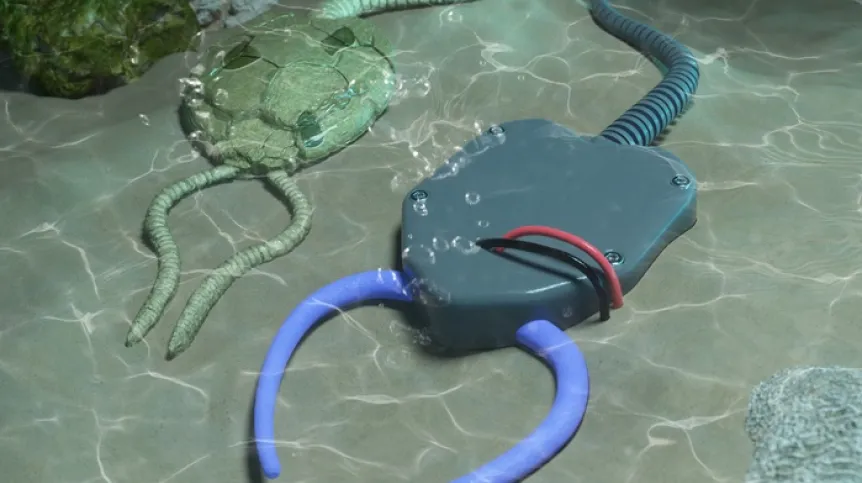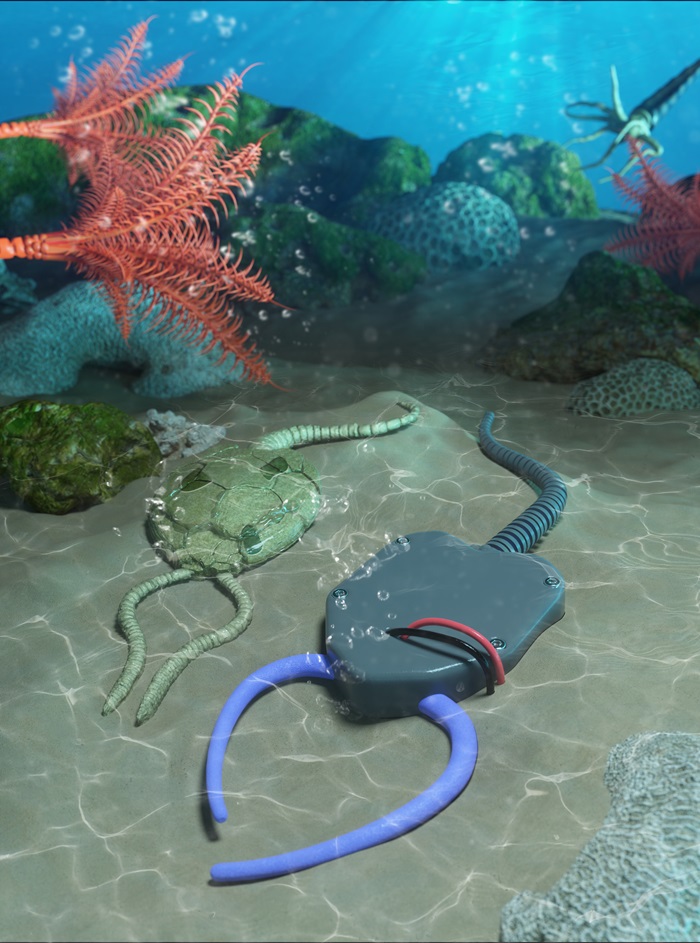
Scientists have built a flexible robot that imitates extinct sea animals from 450 million years ago which can recreate the movements of the oldest mobile stem echinoderms.
Similar robots could provide greater insight into evolution.
Scientists have been looking for various ways to 'bring extinct species back to life' for years. 'The chances of doing this on the basis of preserved fossil DNA from millions of years ago is practically zero, but it has been done in a different, quite unexpected way,’ says Dr. Przemysław Gorzelak from the Institute of Paleobiology of the Polish Academy of Sciences.
Dr. Gorzelak is one of the authors of the paper published in PNAS. The co-authors of the project and the publication are scientists from Carnegie Mellon University in Pittsburgh (USA) and the Spanish Instituto Geológico y Minero de España - Consejo Superior de Investigaciones Científicas in Zaragoza.
‘To build it, we used a 3D-printed replica of the skeleton of echinoderm fossils of the genus Pleurocystites, with embedded flexible artificial contractile fibers that resemble the muscles of living organisms. This allowed to recreate the movements of the oldest mobile stem echinoderms,’ says Dr. Gorzelak.

Echinoderms are a group of marine invertebrates with an internal skeleton made of calcium carbonate. The ones still known today include starfish, sea cucumbers, brittle fish and sea urchins.
The extinct echinoderms from the pleurocystidia group, which the researchers studied, had flattened, 2 cm high bodies equipped with two large appendages used for feeding and a stem that performed locomotor functions. They probably fed on organic remains found on the bottom surface. They moved slowly. Their fossils are known from Europe and North America. 'Unfortunately, there are no known pleurocystitid fossils whose imprints could reveal more about the mechanics of their movement, so interpreting these animals' life habits has been restricted to investigating their skeletal morphology,’ William Ausich, a professor of Earth sciences at The Ohio State University, points out in a commentary on the publication in PNAS.

Now, thanks to the development of palaeobionics (a field that combines the achievements of robotics with palaeontological knowledge), scientists are beginning to fill the gaps in fossil research. Dr. Gorzelak draws attention to the belief of the scientific community that similar robots, inspired by organisms that became extinct millions of years ago, can provide unique insight into evolution and their life habits, and potentially can even have engineering applications, contributing to the development of a new research subdiscipline - palaeobionics.
'To be able to show a child or student how a specimen lying in rock might have actually moved - it just excites the imagination,’ says Ausich.
PAP - Science in Poland
zan/ agt/ kap/
tr. RL













